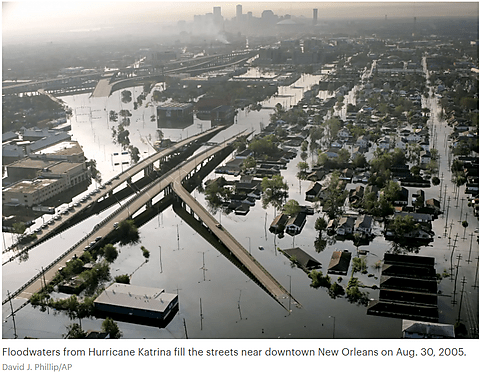A new ProPublica article takes the Army Corps of Engineers to task for major failures coming at the expense of taxpayers and the environment. The article ploughs some of the same ground I did in this 2012 study.
The Army Corps is a government‐owned engineering company that employs 24,000 people. It builds and operates river navigation infrastructure, constructs flood control systems, dredges seaports, manages recreation sites, and operates hydroelectric plants. In my view, most of these activities should be transferred to state governments and the private sector.
ProPublica summarizes problems in nine Army Corps projects. Here are some highlights:
Engineering Failures. “In 2005, design flaws allowed a storm surge from Hurricane Katrina to breach the walls of the $738 million levee system that the Corps had built over the preceding four decades … The American Society of Civil Engineers called the levee failures ‘the worst engineering catastrophe in US History.’” I document the government’s Katrina failures here.
Economic Losses. The Olmsted Locks and Dam project in Illinois was supposed to cost $700 million and create $920 million in benefits annually but ended up costing $3 billion and creating only $236 million in annual benefits. Another failure is the $2 billion and 234‐mile Tennessee‐Tombigbee (Alabama) Waterway. The Corps promised it would create 208,000 jobs, but it only created 29,000.
Costly Fixes. Taxpayers are paying billions of dollars to fix environmental damage caused by the Corps to the Florida Everglades, to Oregon’s salmon runs, and to other natural systems. One project dredged the Mississippi near New Orleans causing a saltwater intrusion and requiring the city to build a new freshwater supply pipe costing at least $100 million.
Useless Projects. After Hurricane Sandy, the Corps spent $63 million constructing sand dune defenses in Margate, New Jersey, that residents apparently did not want. The dunes have caused drainage problems, as predicated, and litigation has ensued.
Investigations at DownsizingGovernment.org have found that many federal agencies screw up over and over for decades but are not reformed. The politicians, who are supposed to fix government failures, talk big but never get the job done before they leave office and become lobbyists or retire on gold‐plated pensions.
The Corps is a case in point. It has attracted scathing criticism about its wasteful projects for more than a century, as I discuss here. ProPublica quotes a 1971 New York Times editorial: “The American people are becoming increasingly fed up with the expensive, boondoggling, make‐work, environmentally destructive projects that to a large degree characterize the civilian activities of the Army’s Corps of Engineers.”
The Army Corps has been wasteful a long time. That said, I’m still optimistic about reform of the Corps and other failing federal agencies. Exploding federal debt, technological changes, and other dynamics will force change. Technology, for example, is obsoleting the massive government‐owned US Postal Service.
How should Congress reform the Corps? I concluded that many of the Corp’s activities—such as flood control and recreation area management—should be turned over to state governments. Other activities— such as seaport dredging and hydropower generation—should be turned over to the private sector. Remaining activities should be moved to the Department of the Interior and the Corps closed down.




